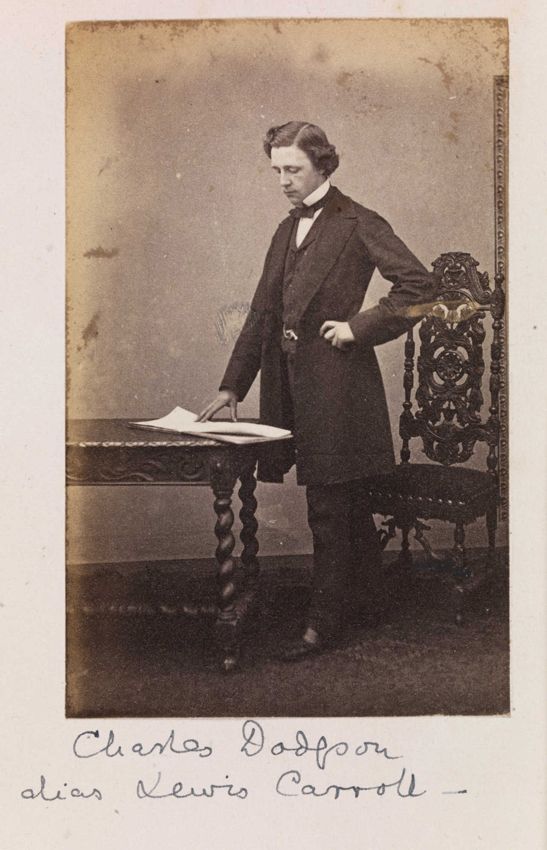
” … the singularly dry and perfunctory manner in which he imparted instruction to us, never betraying the slightest bit of interest … “
State Opera South Australia brings you BOOJUM! based on Lewis Carroll’s (or as he was known to his family, Reverend Charles Dodgson) legendary poem “The Hunting of the Snark.” The piece is a human examination of Carroll and his moral true-self Dodgson.
Charles Lutwidge Dodgson was born on January 27th 1832, the oldest of four boys and seven girls. His father, Reverend Charles Dodgson and his mother, Frances Jane Lutwidge, were both socially well-connected, belonging to families with strong traditions of service to the Anglican Church and the Crown.
When Charles was five, Victoria was crowned Queen and the Victorian Era began. Charles spent his youth at Croft Rectory where his father’s living was worth enough for generous family life and no lack of domestic servants. It epitomized mid-Victorian professional class virtue and well being. Family life dominated his pre-school years and he was writer and editor of the “family magazine”.
His school record was impeccable and soon he was sent away to Rugby School, a bleak brutal environment, for an education befitting his station in life. Whatever the hardships of the classrooms by day and the dormitory by night, Charles won many prizes for work, although he was no good at games. He seemed to come through unscathed.
Charles was presentable, nearly 6 ft tall, with a trim figure, good features and a handsome, full face. He was always neatly dressed, top-hatted and garnished with winter or summer gloves. By profession, he was a keen mathematician, studious and hardworking and, by inclination and upbringing, a conformist. He was 19 when he arrived at Christ Church College, Oxford, and 66 when he left to die.
Christ Church students were required to take holy orders and not to marry. It was a time of great internal religious strife and while the battles within the established church thundered around him, Charles managed to maintain a middle moderate course in Anglicanism. By 1855 he had gained a first in the Final Mathematics School, followed by his BA and was appointed as a teacher of mathematics.
Within a year, however, he had wearied of undergraduates – and they had wearied of him! One of them recorded, ” … the singularly dry and perfunctory manner in which he imparted instruction to us, never betraying the slightest bit of interest … ”
By 1856 he had begun contributing drawings and articles to various local magazines and the nom de plume, Lewis Carroll, had been chosen. He continued to write on a wide variety of topics throughout his lifetime, but he really excelled as a photographer and has been described as the best photographer of children in nineteenth-century England. From 1856-1880 he pursued photography so intensely that it is difficult to imagine how he fitted in his industrious and prolific career as a writer of children’s fantasies, poetry, puzzles, university ephemera and mathematical miscellanea.
His favourite subject for photography – and one which he spent much of his life pursuing – was attractive little girls, the daughters of the well to-do. Youth, beauty and purity seemed to fascinate him. His friendships with these children often developed and carried on for years – or at least until they became pubescent when his interest cooled.
In 1861 Charles took Deacon’s Orders (but never Priest’s Orders) and in doing so took on a life of celibacy and settled into the securely sheltered microcosm of Victorian Christ Church for the rest of his life. He was a meticulous letter writer (about 2000 a year) and a fastidious keeper of diaries (on his death these numbered 13 volumes). The destruction of a series of these diaries, by his sisters, from
1858-1862 has aroused suspicion that they contained clues either to religious doubts during the period of his ordination or an unhappy love affair, although thorough research has not substantiated either theory.
Dodgson’s most famous children’s fantasies were published during those years at Christ Church: ALICE IN WONDERLAND (1865), ALICE THROUGH THE LOOKING-GLASS (1871), THE HUNTING OF THE SNARK (1876) and SYLVIE AND BRUNO (1889). On January 1898 he died from a bronchial infection at Guilford.



